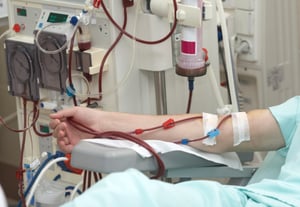Why Surveillance is Important – You Can’t Always Believe What You See
“The access looks good, why should I bother with surveillance?”
Through years of training and practice, nephrologists, interventional radiologists and surgeons have honed keen observation skills. Yes, we all tend to believe what we see. “A  picture is worth a 1000 words,” is what we say and we certainly do think what we see is “real.” A measurement, on the other hand, is abstract, hard to get one’s mind around unless one has a reference and, even then, it is often hard to determine if it is actually within an acceptable threshold.
picture is worth a 1000 words,” is what we say and we certainly do think what we see is “real.” A measurement, on the other hand, is abstract, hard to get one’s mind around unless one has a reference and, even then, it is often hard to determine if it is actually within an acceptable threshold.
But should a nephrologist just make decisions by what he or she sees? Or, in other words, should a nephrologist just rely on access monitoring and dismiss the role of surveillance? No!
When it comes to physiological function, what one feels or even sees on an angiogram or fistulogram is not sufficient. “Seeing” does not equate to “function.” What one “sees” is structure or anatomy in one or two dimensions. An ultrasound dilution flow surveillance measurement provides a number that indicates actual physiological function. It provides the clinician with a quantitative dimension of physiological information that can corroborate his or her clinical or “seeing/feeling” assessment. On the other hand, it can signal a warning that access function is not as was gleaned from monitoring alone.
There was no significant correlation between the change in blood flow and the change in percentage of stenosis. CONCLUSION: Following angioplasty of a venous stenosis, the graft blood flow is most closely predicted by the preprocedural blood flow and is similar to the highest recorded blood flow ever measured in that graft. Angiographic criteria to assess the success of angioplasty are not predictive of changes in blood flow.
Ahya et al, “Flow in Hemodialysis Grafts after Angioplasty: Do Radiologic Criteria Predict Success?” Kid Int 2001, 59(5): 1974-8.
Just as airline pilots learn to trust their instruments (measurements) and not just what they see, clinicians need to learn not to just trust “what they see,” but take the necessary and critical “leap of faith” to trust surveillance flow measurements as the true indicator of the physiological function of an access.
Click to Tweet: Why Surveillance is Important: You Can't Always Believe What You See
Derived from IR-FN #3 Angioplasty, Rev. A, 11/07




